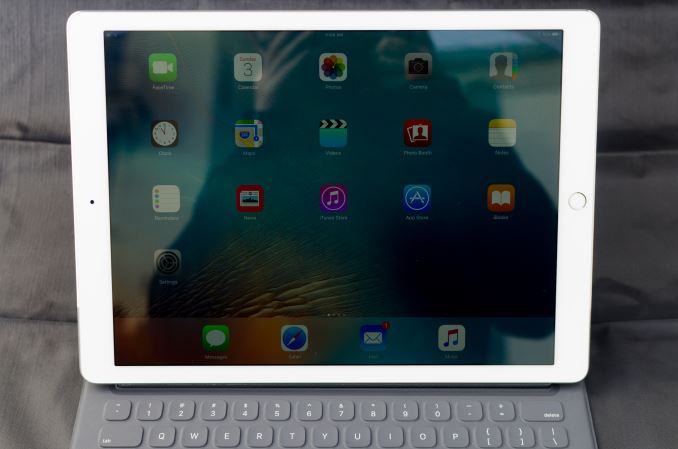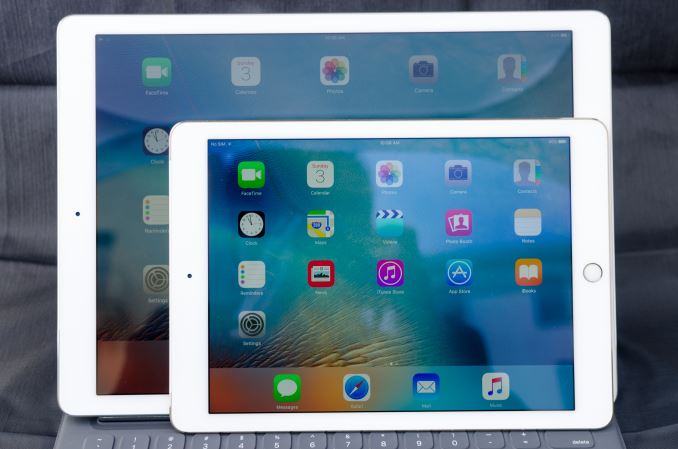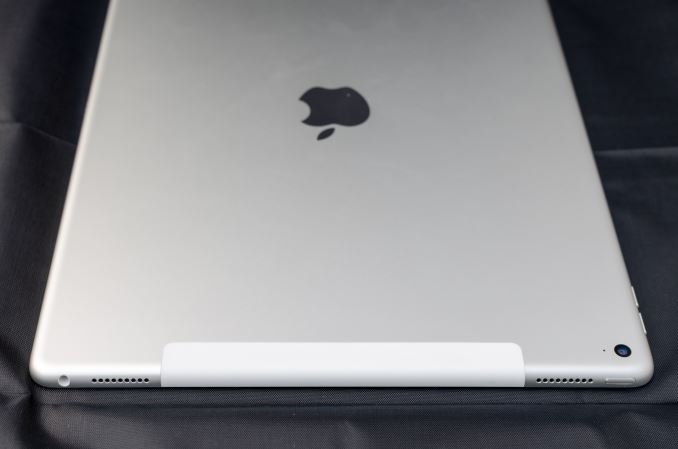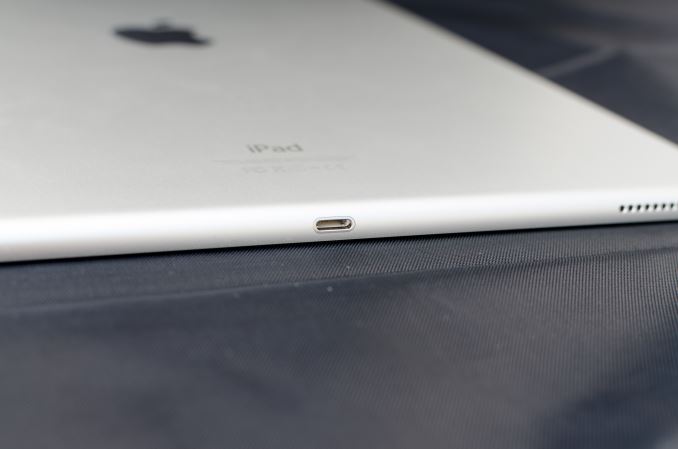The Apple iPad Pro Review
by Ryan Smith, Joshua Ho & Brandon Chester on January 22, 2016 8:10 AM EST
At this point it probably isn’t a secret that tablet sales have leveled off, and in some cases they have declined. Pretty much anywhere you care to look you’ll see evidence that the tablet market just isn’t as strong as it once was. It’s undeniable that touch-only tablets have utility, but it seems that the broader market has been rather lukewarm about tablets. I suspect at least part of the problem here is that the rise of the phablet has supplanted small tablets. Large tablets are nice to have, but almost feel like a luxury good when they’re about as portable as an ultrabook. While a compact laptop can’t easily be used while standing, or any number of other situations where a tablet is going to be better, a compact laptop can do pretty much anything a touch-only tablet can. A laptop is also going to be clearly superior for a significant number of cases, such as typing or precise pointing.
As a result, large touch-only tablets feel like they’ve been limited to home use as a computer away from the computer. Tablets are great when you’re on the couch or in bed, but once you get to this point there are some obvious questions as to whether it makes sense to drop $500+ USD on a tablet that seems to have relatively limited utility. The Surface lineup has been showing signs of growth, but in general the Surface is more of a mix between laptop and tablet rather than a tablet. I would argue that given the OS and overall design that the Surface and Surface Pro are really more laptop than tablet, even if at the hardware level the Surface Pro 4 and Surface 3 are basically tablets with kickstands and keyboard covers.
If you’re guessing that this means Apple has had some issues with growing sales of their iPad lineup, you’d be right. From my first experiences with the iPad 3, I was impressed with the improved user experience for things like web browsing and other smartphone tasks, but I never really felt like it made enough sense to get one for myself. The iPad Air 2 was once again impressive and I felt like I could recommend it to other people that wanted a tablet, but I personally struggled to come up with a reason why I would buy it.
This brings us to the iPad Pro. This is probably the first time Apple has seriously deviated from traditional iPad launches, putting together a tablet built for (limited) productivity and content creation rather than just simple content consumption, creating what's arguably the iPad answer to the Surface Pro. To accomplish this, Apple has increased the display size to something closer to that of a laptop, and we see the addition of a stylus and a keyboard cover for additional precision inputs. Of course, under the hood there have been a lot of changes as well, so the usual spec sheet can be found below to summarize those changes.
| Apple iPad Air 2 | Apple iPad Pro | |
| SoC | Apple A8X 3 x Apple Typhoon @ 1.5GHz |
Apple A9X 2 x Apple Twister @ 2.2GHz |
| GPU | PowerVR 8 Cluster Series6XT (Apple GXA6850) |
PowerVR 12 Cluster Series7XT |
| RAM | 2GB LPDDR3 | 4GB LPDDR4 |
| NAND | 16/64/128GB | 32/128GB |
| Display | 9.7" 2048x1536 IPS LCD | 12.9" 2732x2048 IPS LCD |
| Size and Mass | 240 x 169.5 x 6.1mm 437g WiFi, 444g LTE |
305.7 x 220.6 x 6.9 mm 713g WiFi, 723g LTE |
| Camera | 8MP Rear-Facing, f/2.4, 1.1 micron, 1.2MP Front-Facing, f/2.2 | |
| Battery | 27.3Wh | 38.5Wh |
| Launch OS | iOS 8 | iOS 9 |
| Cellular Connectivity | MDM9x25 Category 4 LTE + GPS/GNSS in Cellular SKU | |
| Other Connectivity | 2x2 802.11a/b/g/n/ac + BT 4.2, Apple Lightning | |
| SIM | Optional NanoSIM | |
| Price | $499/599/699 16/64/128GB | $799/949/1079 32/128GB/128GB LTE |
At a high level, the iPad Pro gains a larger display with a higher resolution, more memory, a new SoC, and a larger battery to compensate for the change in display size. In addition to these changes, the iPad Pro also brings noticeable changes to the speakers, with an increase to four speakers which allow the iPad Pro to compensate for device orientation when projecting stereo audio.
Design
The most immediate change that you can see in the iPad Pro is the sheer size. The 12.9” display of the iPad Pro basically makes it feel like you’re carrying a laptop around. I would argue that this doesn’t actually affect the portability of the iPad Pro, but this is mostly because the iPad Air 2 was something that I only carried in a backpack to begin with. People carrying their tablets in a small bag, purse, or even just in their hands will notice the difference, so the change in size might be more or less noticeable depending upon how you carry things around.
The increase in size does affect weight. After significant use, I honestly don’t think the mass is a significant issue. It does feel heavier than the iPad Air 2, but the mass distribution is such that there isn’t a ton of battery hanging out at the edges of the device where it’ll affect the moment of inertia. This does raise the question of whether Apple included enough battery for sufficient battery life, but that’s a question best left for the rest of the review.
In terms of design, the iPad Pro is rather unremarkable if you’ve ever seen an iPad Air before; it is for all intents and purposes a bigger iPad Air. On the front, the display dominates, with some bezels on the sides and top. The top has the front-facing camera, and the bottom has the home button with TouchID.
Looking at the sides of the tablet, the top edge has the power button and 3.5mm port, along with two of the four speakers. The right edge has the volume buttons, and the bottom edge has the Lightning port and the other two speakers. The left edge is mostly empty, but contains the Smart Connector for the Smart Keyboard and similar accessories.
The back of the tablet is mostly unremarkable as well. For the LTE model, an RF window is visible on the top of the device to allow LTE and other connectivity to function. For the WiFi variants, it looks like the bottom display bezel and the bottom two speakers are the RF windows, so there aren’t any visible areas that indicate where the WiFi antennas are.
Overall, the iPad Pro feels like an iPad, with nothing all that remarkable beyond its size which is carried well. I never really noticed the mass or size of the iPad Pro even if it is clearly larger and heavier than the iPad Air 2. I also didn’t notice any issues with the back cover flexing, but given enough pressure on the back cover pretty much any device this large will see some screen distortion or bending. The iPad Pro does technically regress in thickness compared to the iPad Air 2, but I never noticed the difference in practice, especially when the larger display is really what matters more.
















408 Comments
View All Comments
ddriver - Friday, January 22, 2016 - link
Should have named in iPad XL or something, this device will barely suit the need of any professional. Performance is good, but without supporting professional software, the hardware is useless.Coztomba - Friday, January 22, 2016 - link
And why would anyone bother to make professional software if the hardware wasn't capable? They needed a starting off point to say "Hey we can produce the hardware to run pro apps on a iPad. It's only going to get better. Start developing!"ddriver - Friday, January 22, 2016 - link
If anyone could stimulate software companies to do that, I guess that would be apple with its mountains of money and strong sales. They do have enough resources to do the software themselves.Mobile device hardware has been capable of professional workloads for at least 2-3 years. Nobody bothered to do it. Big software companies did not port their applications to ARM, instead they made cheap, crippled lesser versions. This is IMO a stupid move, they probably did this to promote their professional software to common folk, but it would have been more lucrative to bring professional software to mobile platforms.
There are 2 main issues with mobile platforms - memory and CPU performance. Modern software is very bloated memory consumption wise, especially software relying on managed languages, the latter are also significantly slower in terms of performance than languages like C or C++.
There is one big issue with legacy professional software - it originates back from the days developers were locked in platform specific application development APIs, so it represents a significant effort to port them to mobile platforms - essentially, most of the stuff needs to be rewritten.
But a rewrite in faster and more efficient language, taking advantage of contemporary technology such as OpenCL can easily bring professional software to mobile platforms at an experience as good as that of desktop workstations. Naturally, more efficiently written software will also run that much better on powerful desktop machines as well.
mr_tawan - Friday, January 22, 2016 - link
Not all pro are in the multimedia industry, you know :-).For most office workers, for instance, the only things they might need are notetaking (onenote), email (outlook), wordprocessor (word), and calendar (onenote). Most all tablet are capable to all of that, but it is a bit awkard to work with (due to the missing stylus, and not-so-comfy keyboard).
With iPad Pro which, well, address this issue in the same way as the Surface Pro by adding keyboard and stylus to the tablet. It's much easier to use the table extensively (rather than just browsing web and watching video, which is hardly described as a profession job). So I personally think that adding these two options could takes the iPad into the 'professional' realm.
I think that Apple would love to have iPad to complement MacBook (and Mac Pro), rather than to compete. If you need more power than just by Mac Pro :-).
ddriver - Friday, January 22, 2016 - link
Yeah, why use one device when you can buy and lug around two devices instead.melgross - Friday, January 22, 2016 - link
There's actually quite a lot of professional software available on iOS, and has been for some time. I suppose if you do t use iOS, and so do t know what's a bailable, you can say that little is available, but it's simply not true. Microsoft itself had about two dozen professional apps on iOS. You really need to look through the App Store.ddriver - Friday, January 22, 2016 - link
What would those 24 ("two dozen") professional microsoft apps be?Dave Bothell - Saturday, January 23, 2016 - link
Word, Excel, PowerPoint, Outlook, OWA for iPad, Sunrise Calendar, OneDrive, OneDrive for Business, OneNote, SmartGlass, Skype, Bing for iPad, Remote Desktop, Lync, Office 365 Admin, Intune, Azure Authenticator, Sway, SharePoint Newsfeed, Dynamics CRM, Dynamics Business Analyzer, Dynamics Time Management, PowerApps, Global Startup Directory. There's more, but you asked for 24.xerandin - Saturday, January 23, 2016 - link
Smartglass isn't a professional app--it controls Xbox 360s or Xbox Ones, depending on which version of the app you install.dsraa - Sunday, January 24, 2016 - link
you forgot bing.....bing isnt a professional app either.